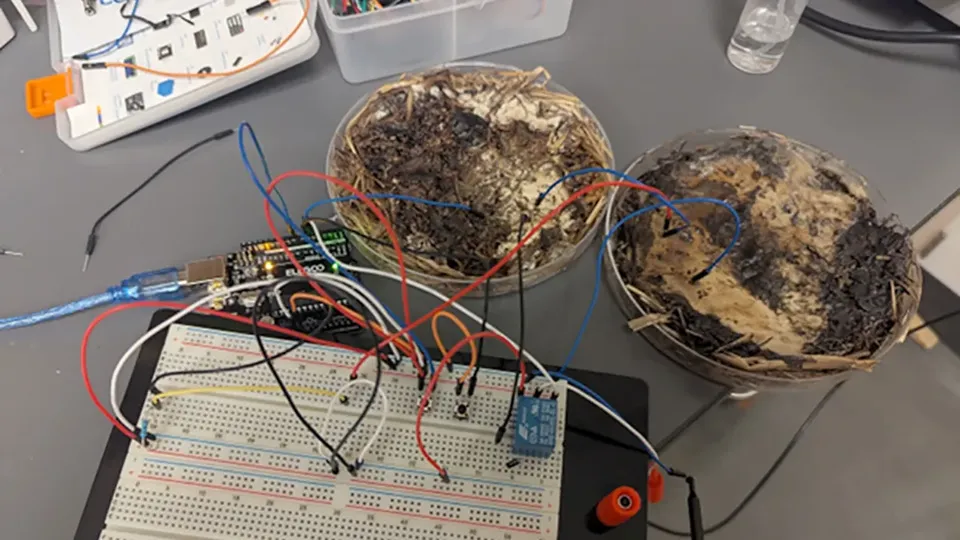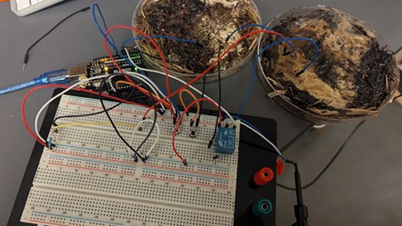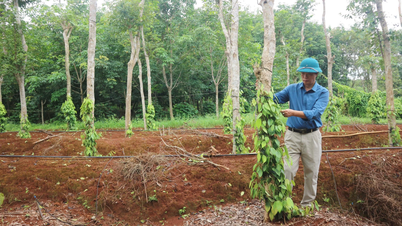 |
Bioelectronics experiment from mushrooms. Photo: Ohio State University . |
Networks of fungal mycelium could be a promising alternative to the tiny metallic devices currently used to process and store digital memory, according to new research, potentially offering a solution to the expensive manufacturing process that has limited computers as efficient as the human brain.
Mushrooms have long been recognized for their extreme endurance and unique properties, making them ideal candidates for bioelectronics to develop breakthrough materials for the next generation of computers. Researchers at Ohio State University have demonstrated that mycelium can be used to replace memory chips.
For example, common edible mushrooms such as shiitake mushrooms can be cultivated and engineered to act as organic memristors, a type of data processor that can remember past electrical states. These natural memristors are also resistant to dehydration and radiation.
The research results show that the device made from shiitake mushrooms exhibits the same effect as a semiconductor chip, and can also be used to create other types of brain-inspired computer components. In particular, they offer low production costs and are environmentally friendly.
“Being able to develop circuits that simulate realistic neural activity means that less power is needed when the device is in standby or inactive,” said John LaRocco, a research scientist in the department of psychiatry at The Ohio State University School of Medicine and lead author of the study.
To explore this possibility, the researchers cultured samples of shiitake and button mushrooms. The mature mushrooms were dried to ensure their long-term viability, then connected to special electronic circuits and run through them with different voltages and frequencies.
“We attached wires and electrical probes to different locations on the mushroom, because each part of the mushroom has different electrical properties. Depending on the voltage and connection, we observed different performance,” LaRocco said.
After two months, the team found that when used as a computer's temporary memory, the mushroom memristor could switch between electrical states at a rate of up to 5,850 signals per second, with about 90% accuracy.
However, the efficiency decreases as the voltage frequency increases. But like the human brain, this can be overcome by connecting more mushrooms to the circuit.
Qudsia Tahmina, an associate professor of electrical and computer engineering at Ohio State University and co-author of the study, said that programming and preserving fungi could have some surprising uses. “This is an example of how technology can advance by drawing on the natural world ,” she said.
The team says the mycelium-based memristor has potential applications in edge computing, aerospace, and embedded firmware. According to LaRocco, fungal bioelectronics are not new, but are emerging as ideal candidates for developing sustainable computing systems due to their biodegradability and lower cost.
Source: https://znews.vn/cong-dung-khong-tuong-cua-nam-post1597337.html




![[Photo] President Luong Cuong attends the 80th Anniversary of the Traditional Day of the Armed Forces of Military Region 3](https://vphoto.vietnam.vn/thumb/1200x675/vietnam/resource/IMAGE/2025/10/28/1761635584312_ndo_br_1-jpg.webp)






















![[Photo] Party Committees of Central Party agencies summarize the implementation of Resolution No. 18-NQ/TW and the direction of the Party Congress](https://vphoto.vietnam.vn/thumb/1200x675/vietnam/resource/IMAGE/2025/10/27/1761545645968_ndo_br_1-jpg.webp)
![[Photo] National Assembly Chairman Tran Thanh Man receives Chairman of the House of Representatives of Uzbekistan Nuriddin Ismoilov](https://vphoto.vietnam.vn/thumb/1200x675/vietnam/resource/IMAGE/2025/10/27/1761542647910_bnd-2610-jpg.webp)
![[Photo] The 5th Patriotic Emulation Congress of the Central Inspection Commission](https://vphoto.vietnam.vn/thumb/1200x675/vietnam/resource/IMAGE/2025/10/27/1761566862838_ndo_br_1-1858-jpg.webp)








































































Comment (0)